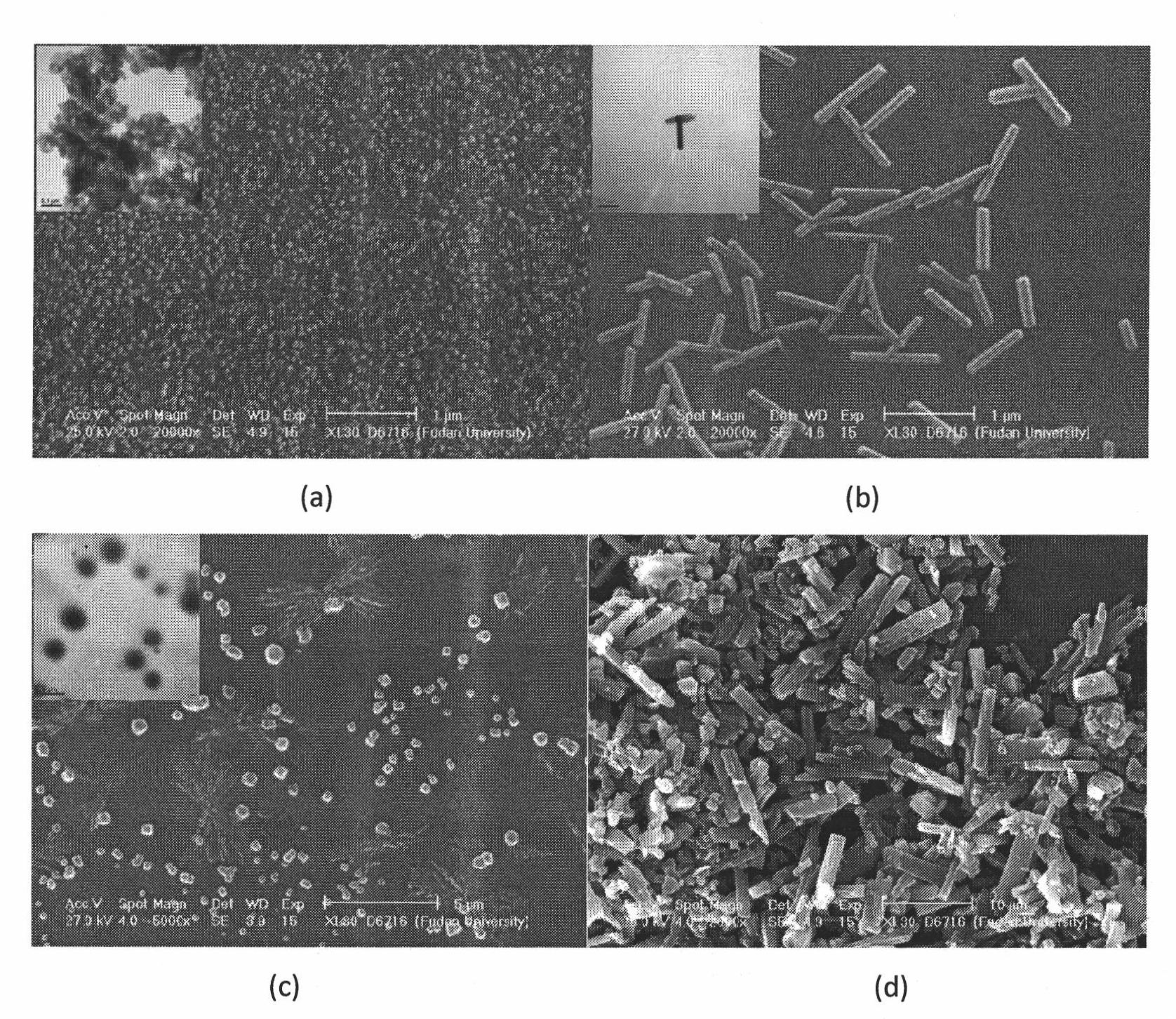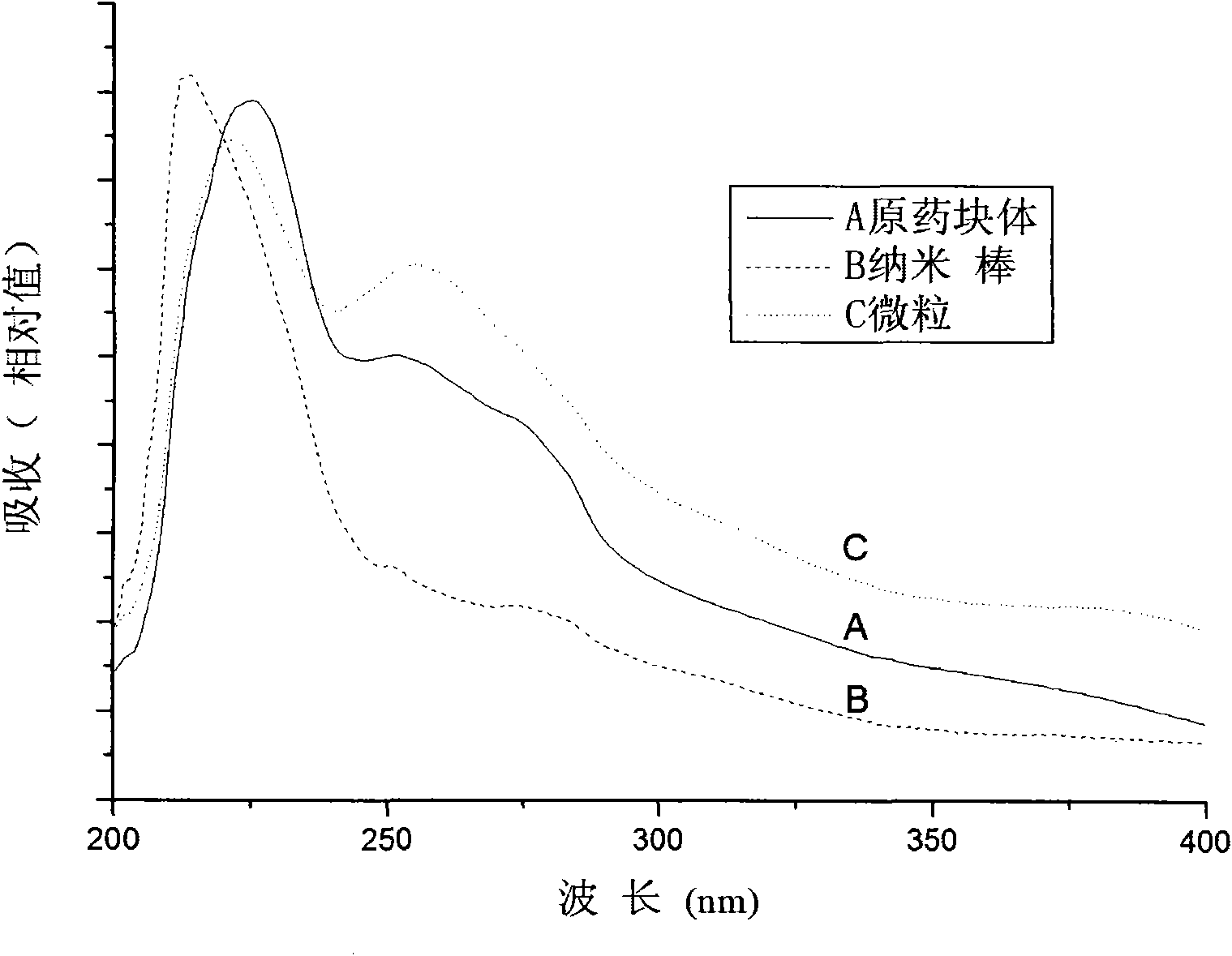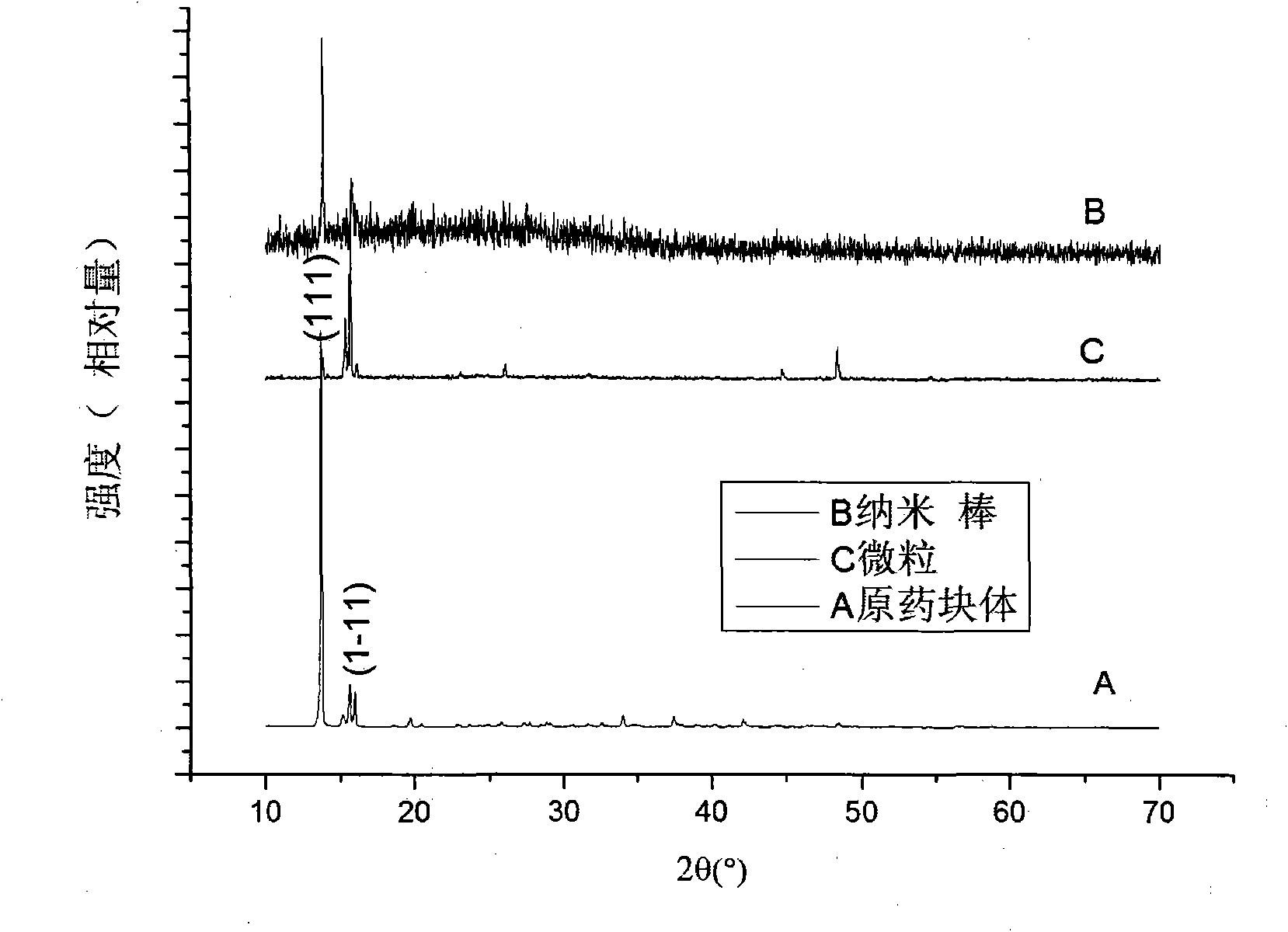Method for preparing dichloro dicyclopentadienyl titanium and cis-platinum nano-particles by atomization ultrasound polarity difference technology
A technology of titanocene dichloride and atomization ultrasound, which is applied in the fields of nano-biomedicine and materials, can solve the problems of narrow anti-tumor system, duration of toxic and side effects, etc., and achieves the effects of controllable production, simple equipment, and difficulty in agglomeration
- Summary
- Abstract
- Description
- Claims
- Application Information
AI Technical Summary
Problems solved by technology
Method used
Image
Examples
Embodiment 1
[0043] 1) Accurately measure 0.01 g of titanocene dichloride solute with an analytical balance, mix it with 5 mL of chloroform solvent, put it in a clean glass dish and stir until it is completely dissolved under the action of a magnetic stirrer, and dilute it in a volumetric flask to 25mL to obtain solution A. Measure 20 mL of petroleum ether (60-90° C.) solution as the eluent to obtain solvent B.
[0044] 2) Take 2mL of solution A in a squeeze sprayer, and place solvent B in an ultrasonic environment. Spray solution A into solvent B to precipitate. The ambient temperature is controlled at 15-25°C; the ambient humidity is 45%-50%; the ultrasonic intensity is 100W; the mass flow rate of the spray is 0.4-0.5mL / min. After 5 min, the collected nanoparticles were centrifuged and washed.
[0045] 3) Characterize the structure and morphology of the obtained product by XRD, SEM, TEM and other means; test the drug release in vitro of the product; and measure its anticancer performa...
Embodiment 2
[0047] 1) Accurately measure 0.01 g of titanocene dichloride solute with an analytical balance, mix it with 5 mL of chloroform solvent, put it in a clean glass dish and stir until it is completely dissolved under the action of a magnetic stirrer, and dilute it in a volumetric flask to 25mL to obtain solution A. Measure 20 mL of petroleum ether (60-90° C.) solution as the eluent to obtain solvent B.
[0048] 2) Take 2mL of solution A in a squeeze sprayer, and place solvent B in an ultrasonic environment. Spray solution A into solvent B to precipitate. The ambient temperature is controlled at 15-25°C; the ambient humidity is 45%-50%; the ultrasonic intensity is 100W; the mass flow rate of the spray is 0.4-0.5mL / min. After 20 min, the collected nanoparticles were centrifuged and washed.
[0049] 3) Characterize the structure and morphology of the obtained product by XRD, SEM, TEM and other means; test the drug release in vitro of the product; and measure its anticancer perform...
Embodiment 3
[0051] 1) Accurately measure 0.1 g of titanocene dichloride solute with an analytical balance, mix it with 5 mL of chloroform solvent, put it in a clean glass dish and stir it under the action of a magnetic stirrer until it is completely dissolved, and dilute it in a volumetric flask to 25mL to obtain solution A. Measure 20 mL of petroleum ether (60-90° C.) solution as the eluent to obtain solvent B.
[0052] 2) Take 2mL of solution A in a squeeze sprayer, and place solvent B in an ultrasonic environment. Spray solution A into solvent B to precipitate. The ambient temperature is controlled at 15-25°C; the ambient humidity is 45%-50%; the ultrasonic intensity is 100W; the mass flow rate of the spray is 0.4-0.5mL / min. After 5 min, the collected nanoparticles were centrifuged and washed.
[0053] 3) Characterize the structure and morphology of the obtained product by XRD, SEM, TEM and other means; test the drug release in vitro of the product; and measure its anticancer perfor...
PUM
| Property | Measurement | Unit |
|---|---|---|
| Particle size | aaaaa | aaaaa |
| Diameter | aaaaa | aaaaa |
| Particle size | aaaaa | aaaaa |
Abstract
Description
Claims
Application Information
 Login to View More
Login to View More - R&D
- Intellectual Property
- Life Sciences
- Materials
- Tech Scout
- Unparalleled Data Quality
- Higher Quality Content
- 60% Fewer Hallucinations
Browse by: Latest US Patents, China's latest patents, Technical Efficacy Thesaurus, Application Domain, Technology Topic, Popular Technical Reports.
© 2025 PatSnap. All rights reserved.Legal|Privacy policy|Modern Slavery Act Transparency Statement|Sitemap|About US| Contact US: help@patsnap.com



